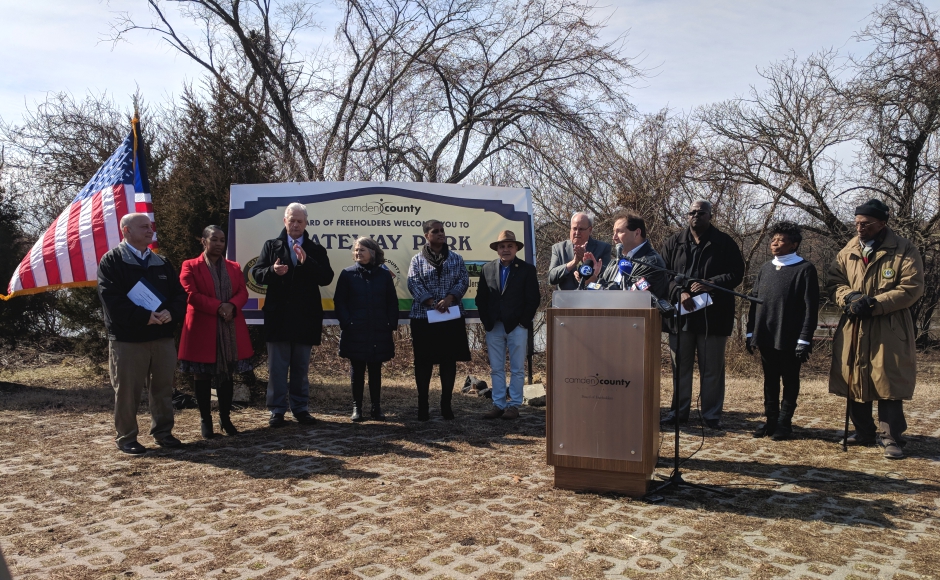The $5-10-million project took nearly 20 years from knockdown to ribbon-cutting, but East Camden residents have another greenspace to visit at the edge of the Cooper River.
By Matt Skoufalos | March 12, 2019
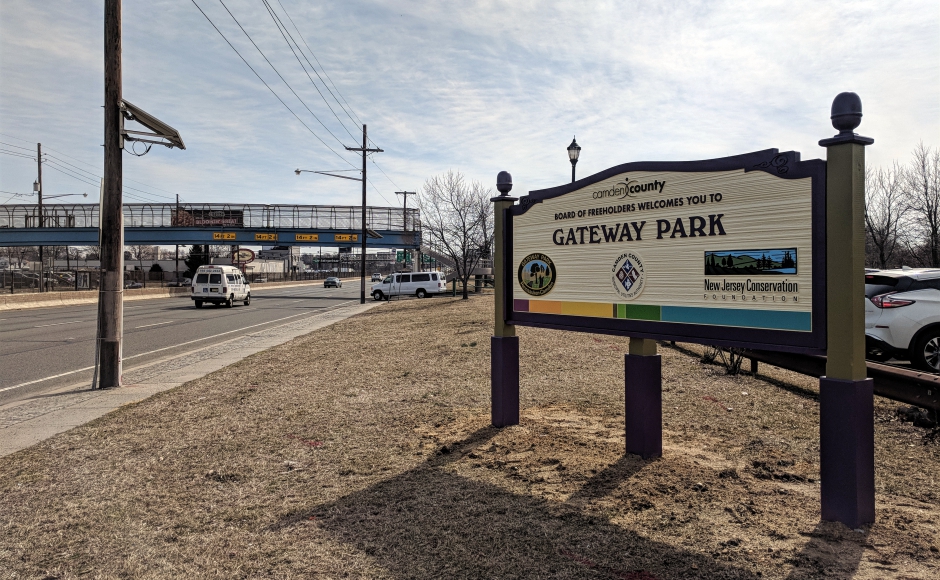
To get an idea of what the newest public green space in Camden County used to look like, you could dial up some historic footage—namely, the 1995 Terry Gilliam film 12 Monkeys.
Late in the story, there’s a blink-and-you’ll-miss-it cameo by the City of Camden.
It comes in the form of an exterior shot of the Oasis Motel, advertising hourly rates along Admiral Wilson Boulevard at the edge of Philadelphia.
The motel was movie-grade seedy more than a quarter-century ago, and that was five years before Governor Christine Todd Whitman had it torn down along with 15 other properties ahead of the Republican National Convention in Philadelphia.
Even then, the highway that cuts from Pennsauken into Camden City and onward to the Ben Franklin Bridge was dotted with dilapidated properties that had become havens for prostitution, the drug trade, and worse, remembered Camden County Freeholder Jeffrey Nash.
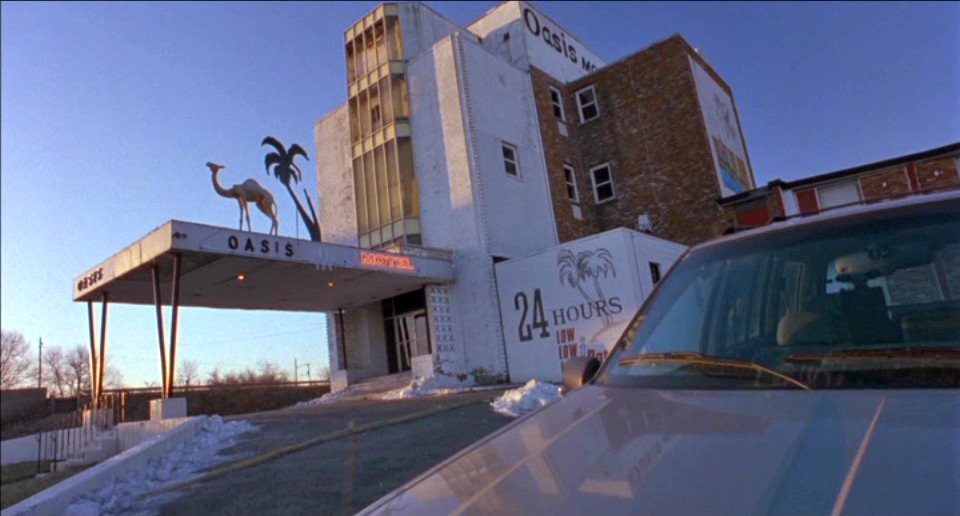
They were leveled quickly enough through eminent domain, but it took years for the properties to be transferred to the Delaware River Port Authority (DRPA), which spent some $5 to $10 million to environmentally remediate them into usable green space.
On Monday, and after nearly two decades of waiting, the Camden County government welcomed the first official visitors to the 25-acre Gateway Park created there.
At Monday’s ribbon-cutting, Nash described the park at the border of Camden City and Pennsauken as “symbolic of the great city of Camden’s restoration and revitalization.”
He recalled the advice of Camden community leader Monsignor Michael Doyle, who’d told him years ago, “If you want to improve the city, open the waterway to the people.”
As if to confirm the augury of his statement, a bald eagle soared by overhead, to the delight of onlookers.
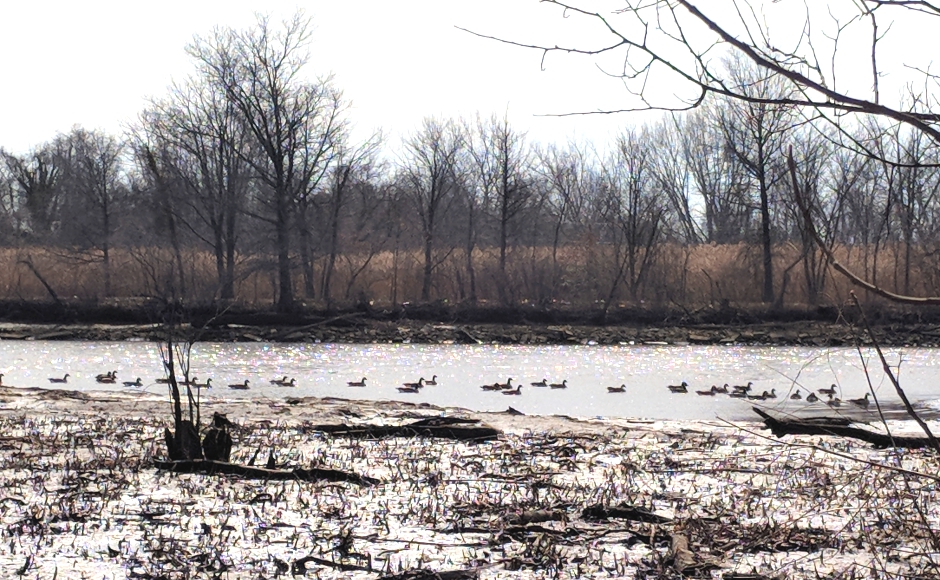
Gateway Park is one of a series of new green spaces in the city that represents some $106 million in park renovations.
Last year’s demolition of the Riverfront State Prison gave way to Cooper’s Poynt Park; Phoenix Park in the Waterfront South neighborhood opened not long after, and the Cramer Hill waterfront park, which will emerge from the remediated Harrison Avenue landfill, is on schedule for the next few years.
Remediating and restoring these formerly contaminated lots into green space also helps ease the strain placed on the combined stormwater and sewer system of the city, said Camden County Municipal Utilities Authority (CCMUA) Executive Director Andrew Kricun.
“The greenspace will recapture stormwater and reduce flooding,” while restoring the environment of the natural wetlands there, Kricun said.
Effectively a passive recreational space, the Gateway Park trail parallels the Cooper River shoreline; its cleanup reflects the remediation of underground fuel storage tanks and “historic fill” used to raise the elevation of the shoreline, Kricun said.
But for Olivia Glenn, Director of New Jersey Parks and Forests for the state Department of Environmental Protection (NJDEP), who grew up in nearby Parkside, Gateway Park represents “open-space justice for Camden City.
“I have experienced the metamorphosis and transformative power of this landscape,” Glenn said. “I knew that what we saw wasn’t always what was here.”
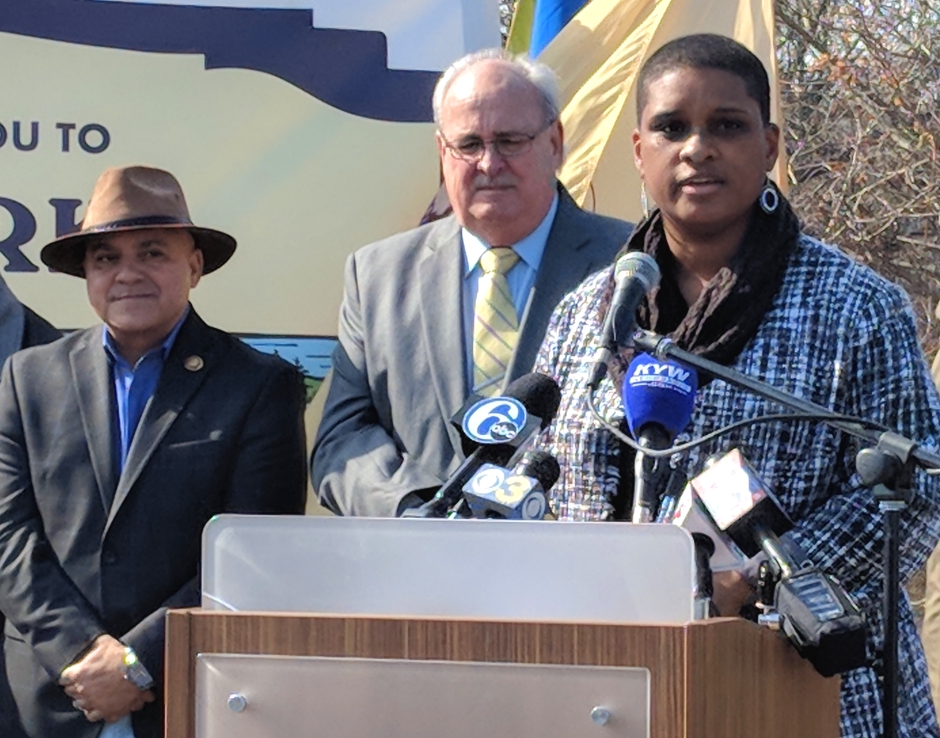
Although the park took some 20 years to open, “this accomplishment proves that environmentalism fosters democracy and civic engagement,” she said.
Glenn described having to travel throughout Vermont and New Hampshire as a college student to experience open spaces she couldn’t access in her own backyard.
“Fred Stine [of the Delaware Riverkeepers Network] was the only person in Camden I knew with a canoe,” she said.
These days, however, Camden City Mayor Frank Moran hopes more visitors will enjoy a firsthand look at the wetlands from the water’s edge.
Moran, a former Camden County parks director, invited the public to join him in paddling the back channel May 3.
For now, the only place to put a vessel in the water is behind the nearby Pub in Pennsauken; within a few years, Gateway Park will be outfitted with additional boat launches as well as lighting throughout.
Moran described the project as part of a commitment to making “great outdoor spaces” available within a 10-minute walk of the East Camden neighborhood.
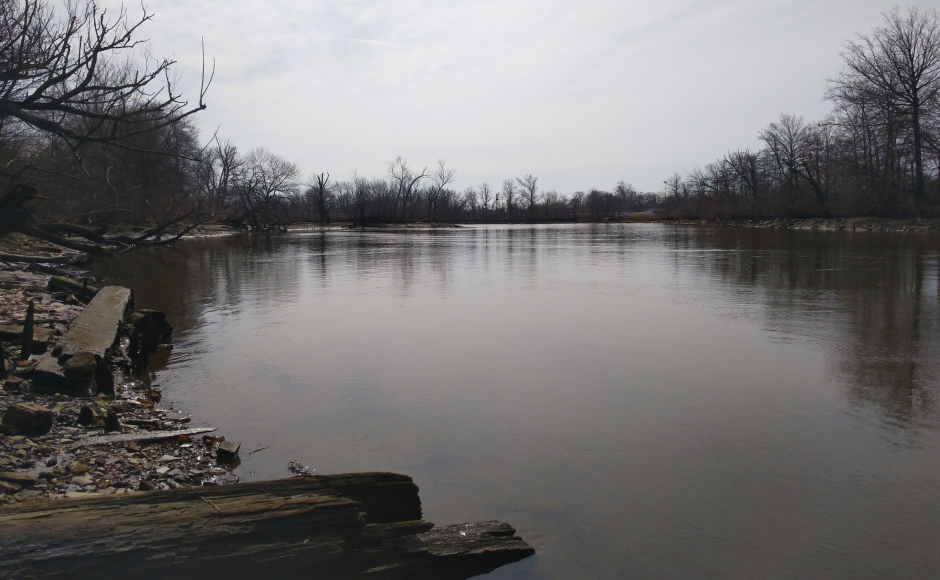
Pennsauken Mayor Jack Killion said that the park reminded him of his childhood in Northeast Philadelphia, where Pennypack Park provided a frequent escape.
He indicated the nearby pedestrian overpass above Admiral Wilson Boulevard as the key for neighborhood kids “to come over here and just imagine, just dream.
“You can’t put a monetary amount on what that is,” Killion said.
To Martha Chavis, a neighborhood organizer who lobbied for the park’s completion for two decades, Gateway Park represents “part of a quality of life” for Camden residents.
“Like any other community throughout the United States,” they need access to greenspace, Chavis said, particularly when “dealing with health inequities and social determinants [of health]” in the city.
DRPA CEO John Hanson had similarly high hopes for the impact of the project.
“We are in the business of connecting people, normally through transportation assets,” Hanson said. “Today we’re connecting them in a more enduring, social way.”

